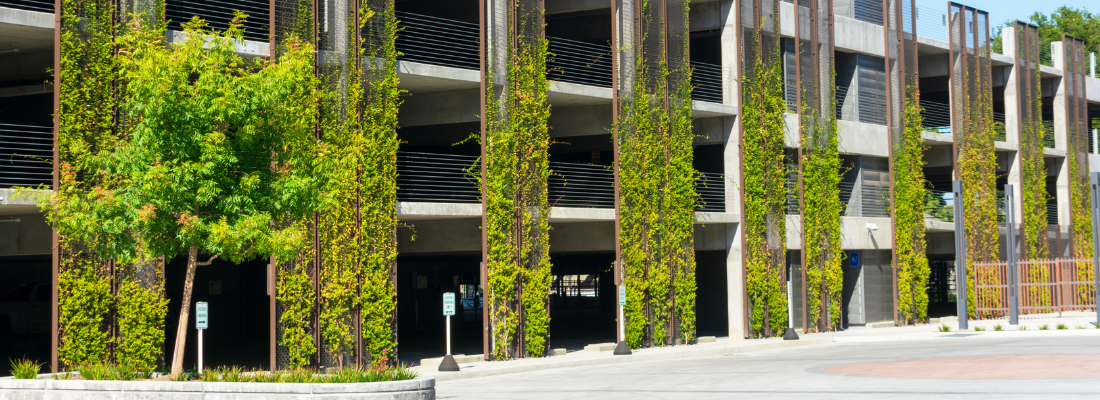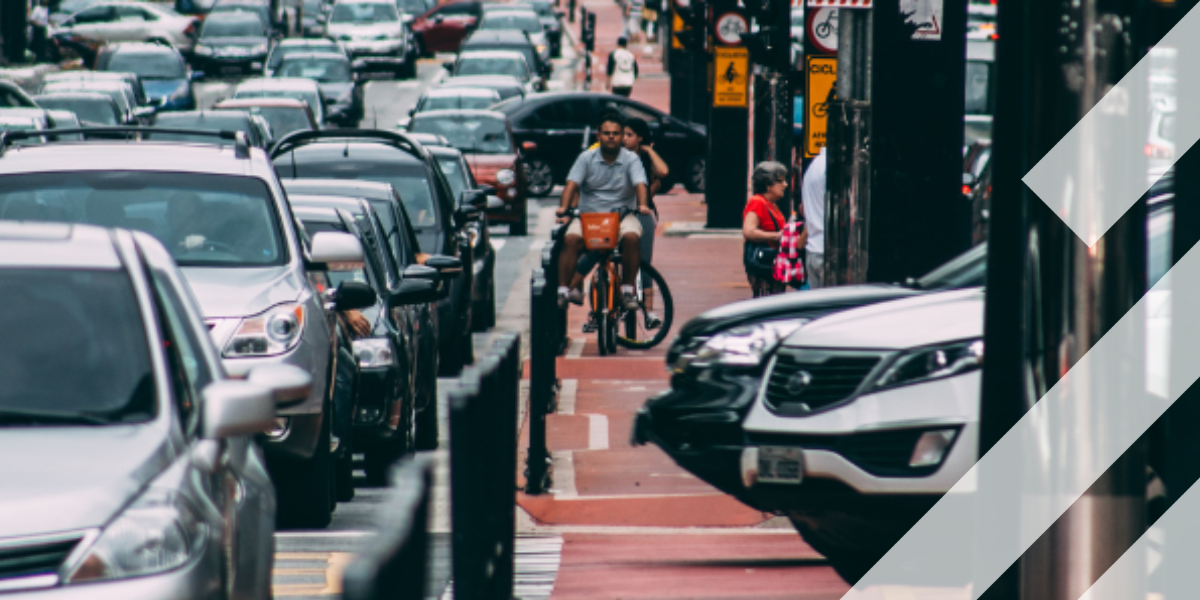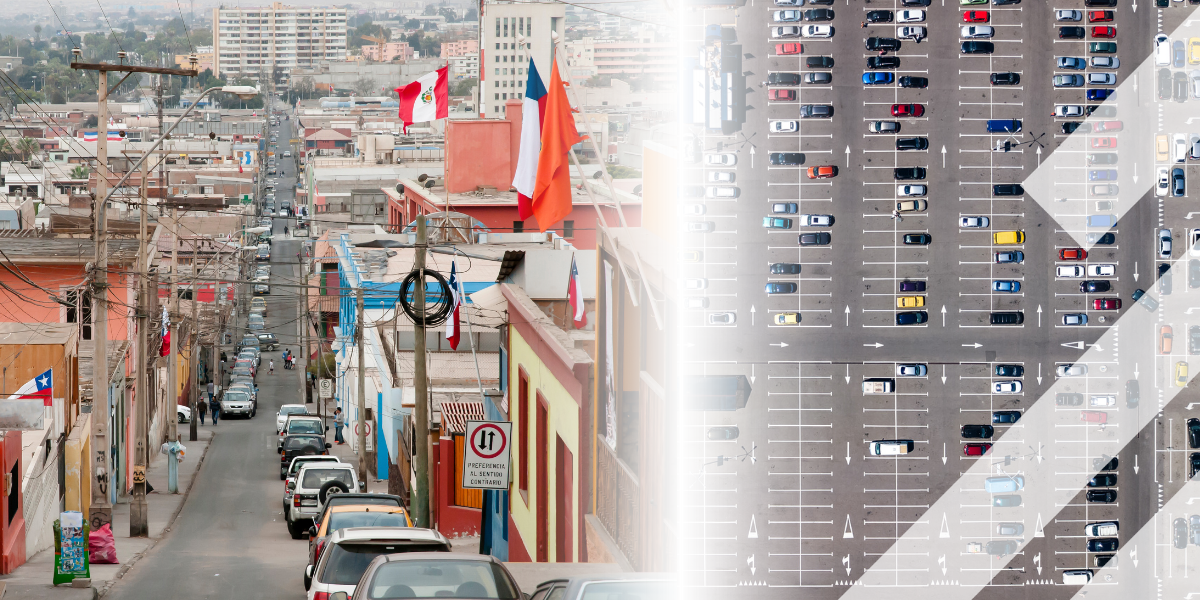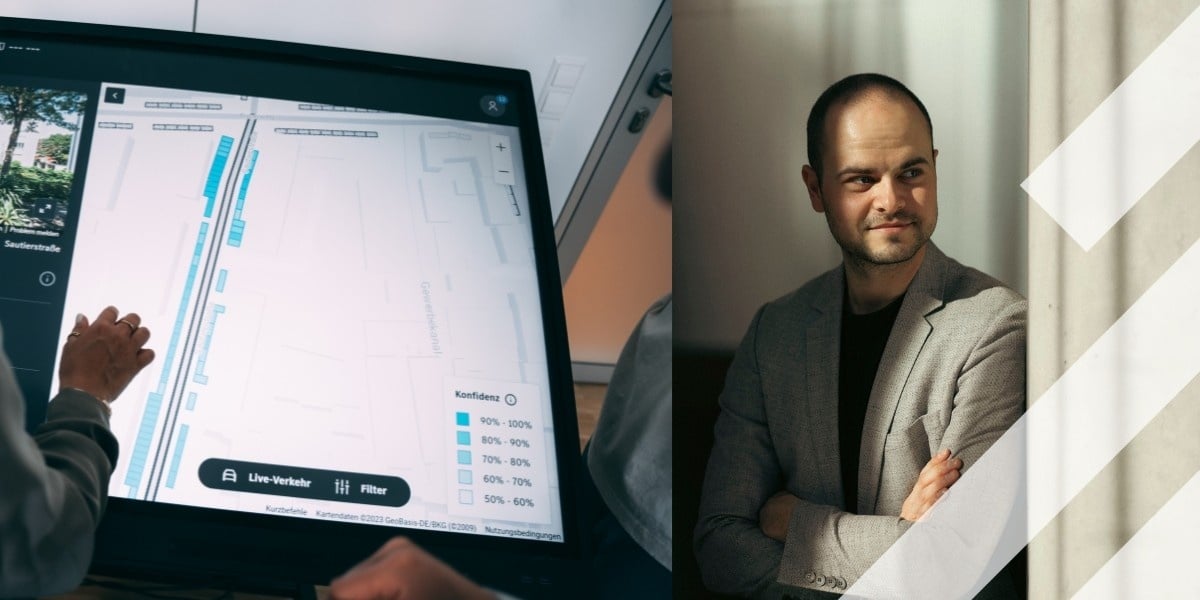Ten sustainable parking innovations for a more sustainable environment
Currently , transport and mobility are accountable for over 16% of the world’s greenhouse gasses and almost a quarter of Europe’s emissions. In 2019, transport in Europe alone emitted 1103 megatons of CO2. Two solutions within this sector are to lessen travel and to make every aspect of mobility as sustainable as possible.
In this extensive blog, we will take a look at ten solutions aimed at the parking sector, an often underrated sector when considering sustainability. To give some perspective: in the background document for the second Global Sustainable Transport Conference in 2021, the United Nations published a full report on Sustainable Transport, where parking is only mentioned three times...
Creating more sustainable parking is, however, key as it is the start and endpoint of almost any type of mobility. It is a sector in which big strides can be made and all sectors should take their responsibility.
When considering sustainability within parking, we need to think about a more sustainable strategy in every aspect of the parking, from building with other materials for the parking, using circular resources and much more. Within sustainability the effect of products and solutions needs to be considered for the long-term. Will this material/innovation last? Will it be needed to upgrade again in a couple of years? What will the effect be of lessening the parking spots? What can be added to further improve on sustainability solutions for other sectors? Let’s take a look at these ten innovations and take the appropriate steps.
1. Urban planning - Consider the future city plans
Something highly important to consider is the building plans of the city area where parking is aimed to be implemented. It is perhaps not the best idea to build a new parking structure, if the area will be used for something new in the near future. This temporary parking will result in a lot of additional waste, CO2 emissions and water waste during the building process.
Furthermore, a Sustainable Urban Mobility Plan (SUMP) should be in place and should be considered before adding new parking into any mix. A recent study from Poland, for example, showed that the spatial planning was not held into account and that for 20 years Polish cities mainly used the possible minimum rate of parking. This resulted in more individual car rides. They could have considered limiting the number of spots to furthermore limit car use instead of implementing a minimum parking criteria. Don’t build for minimum parking, focus on the long term and focus on minimizing the necessary parking.
2. Materials of the parking garage
When building a parking structure, it is best to use the most sustainable type of materials to lessen the impact on the environment. There are many good materials to consider. Besides, it is extremely important as well to consider the area. If you are in an area which is prone to earthquakes or floods, it can be more sustainable to use sturdier materials as it is very important to choose materials that will deteriorate/collapse less easily. For these types of environments, structural steel, wood, bamboo and reinforced concrete can be used for example.
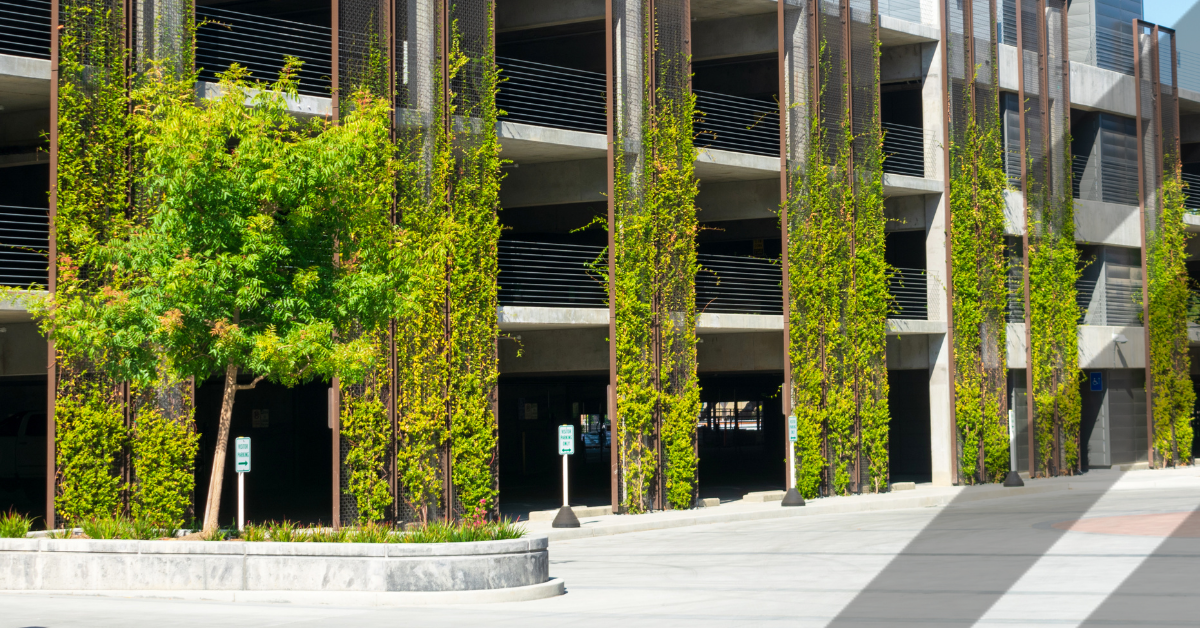
If you have to rebuild every number of years due to natural disasters, the constant rebuilding is less sustainable than using less sustainable materials once. But even then it is still an option to use recycled or better materials instead.
3. Insulation in the parking area
One common way for saving energy is to insulate the building. Ever thought about the fact that this can be applied to parking as well?
Many parking lots are built as part of a larger complex, think of office buildings or apartments. However, they are not always included in the insulation plans. Parkings are often regulated but not insulated as common thought is that people are not there the entire time. This is a huge loss as warmth from the rest of the building can still slip through the cracks of the parking. It is a good step to insulate to keep the warmth in the rest of the building and to decrease unnecessary emissions.
This step is mainly relevant, if the parking is attached to the building on any part. That particular side can be isolated as much as possible to save on unnecessary spent energy.
4. Lighting in the parking lot
Some parkings have the lights on at all times, this is quite a waste of energy as often people do not actually spend as much time in the parking.
It is however possible to base the lighting on the movement in the garage: ensuring that the lighting is only on when people are actually around by installing relevant sensors. Or if this is not possible, to install lighting based on a timer: how long does it take for a person to park their car, unload groceries and leave the garage on foot?
Of course, also consider the type of lighting which is being used: Daylight is, of course, the most sustainable if you can simply install additional windows to make it light enough. If this is not possible, LED is one of the most sustainable types of lighting which you can currently use.
Think smart though: is it necessary to optimize the lighting now? What will you do with the current materials? Try not to optimize until you have fully used your current resources. Throwing away products when they have not yet been fully used, is wasteful as well.
5. Green roof/playground
If this regards a parking with a top floor, an easy way to contribute in a sustainable way, is to add a green roof to the building. This will increase the biodiversity in a city and the green can help convert the CO2 emissions into healthy oxygen again. For open air parking, it is an idea to leave some areas for plants, to keep the earth more cool, and to have additional plants in the garage area which can directly help to convert the CO2 emissions.
6. Using green energy for the parking
Many things within a parking space require energy, from the lighting to the automated doors and the electric vehicle charging. It can be quite a big change to ensure that the energy used, is from a sustainable source. When considering the energy source, opt for a green energy supplier or even install solar panels. It is even possible to connect solar panels as a direct source for charging the EV vehicles, this is one of the most sustainable forms of energy which you can use in a parking lot. There are some amazing innovations to using solar panel energy, even when there is no roof at a parking lot.
Algis Berziunas and Laima Rimkute designed the Green P parking system. The system features a lighting mechanism that can compliment or replace common road lights.

Solar charging while parking will be the parking of the future.
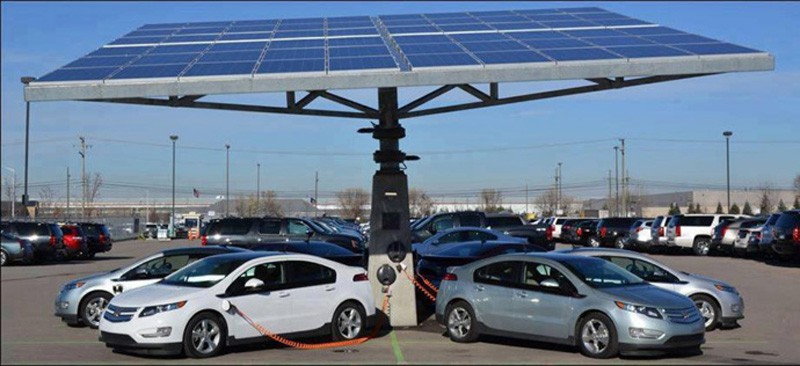
Creative studio design nobis is an eco-friendly parking system that protects and charges vehicles. ‘V-tent’ offers a safe space for electric cars either at home or in city. Band light indicates availability and charge percentage with color and length. The inner layer is covered with reflective materials – with micro ventilation tubes in order to prevent textile and panels from excess temperatures.
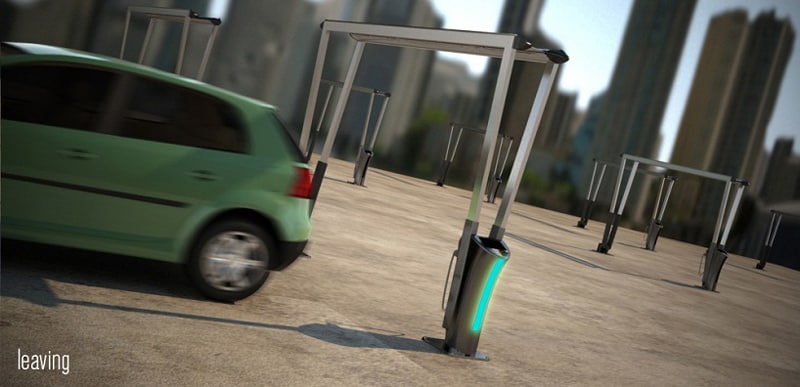
7. Automated parking and retrieval systems (AVSRS)
If you really need to build an new garage, build an automated parking. An automated parking has many benefits as it does not require lighting and heating etc. as no person actually ventures into one. Furthermore, it takes a lot less space and a vehicle does not have to use additional emission in the parking space itself while it is being parked.
A few examples are:
- Reduced carbon footprint, up to 83% of the emissions have been reported in the AVSRS since no running engines are circulating in the storage vault.
- Water efficiency, the reduced size of the facility plays an important role in controlling excessive storm water run-off. Also minimizing the urban heat-island effect created by large impervious surfaces which is dramatically reduced in AVSRS facility.
- Resources, As less building materials are required to construct AVSRS facilities for an equal number of cars parked, fewer resources are utilized.
- Low energy, reduced HVAC requirements, reduced lighting (only required for maintenance).
- Higher density, Average sqft per parking space for AVSRS is 225 sqft compared to 350 sqft for conventional structures. Vehicles can be stored in multiple rows that share a common central transfer aisle, providing for an increased density in parking capacity.
8. Electric vehicle charging stations
One of the more sustainable forms of travelling by car is by using electric vehicles (EV). This reduces a lot of the CO2 emissions. However, all electric vehicles require charging stations as well. In the UK alone, for example, it is already estimated that 750.000 additional charging points will be needed to ensure that people without home charges can charge once a week. By installing EV charging stations, you are making it more appealing for users to buy EV’s.
9.Offer last-mile solutions at the parking
In line with promoting more sustainable alternatives than regular cars, add last-mile solutions to the parking. Install parking for bikes and even collaborate with parties that offer (bike)sharing vehicles. Make it easier and possible for users of the parking to continue by bike and park in the outskirts of cities to keep the car travelling time to a minimum as much as possible. In Europe the number of mobility hubs is increasing.
10. Don’t build - share!
Building usually costs more resources and energy while producing a lot more CO2. It is actually one of the biggest CO2 producing industries in the world as it amounts to 38% of all emissions.
The best way to not have these additional disadvantages is to simply not build. New parking is being built daily, even though a lot of parking remains unused.
The City of Melbourne mentions that there is an overcapacity of off-street parking as between 26 and 41% of private parking spaces are empty. Other European sources even mention a number of around 50%. It is a big advantage to put more resources into optimizing those types of spaces instead of constantly building new parking resources as this is often quite unnecessary. It is very easy to actually utilize this space in a better way, by simply opening up and sharing private parking.
Sustainability is one of the most important keywords to describe the future in every aspect within mobility and parking. Don’t let these opportunities go to waste… Be sustainable.
Share your story
Do you have an innovation, research results or an other interesting topic you would like to share with the professionals in the infrastructure, traffic management, safety, smart mobility and parking industry? The Intertraffic website and social media channels are a great platform to showcase your stories!
Please contact our Sr Brand Marketing Manager Carola Jansen-Young.
Are you an Intertraffic exhibitor?
Make sure you add your latest press releases to your Company Profile in the Exhibitor Portal for free exposure.
Get up to speed on the mobility industry - our newsletter straight to your inbox!
